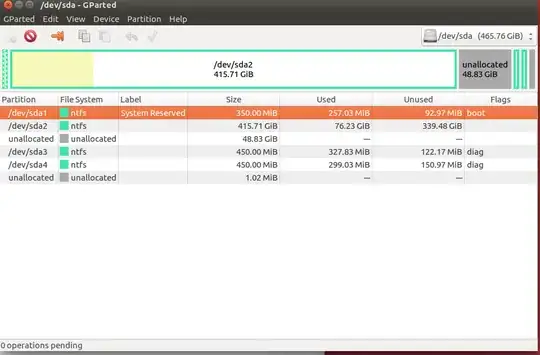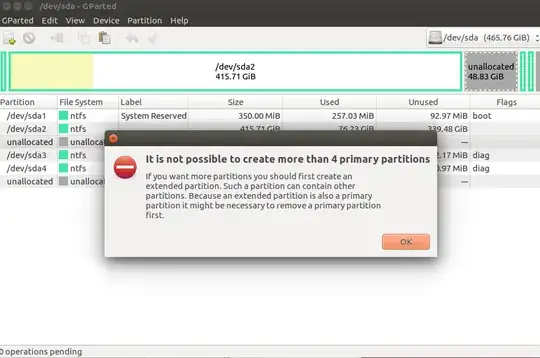I'm trying to dual boot Ubuntu with Windows 10. I shrunk my windows 10 partition to create space for Ubuntu but when I try to partition the free space I am told I can't make more than 4 partitions. I'm not sure what to do/if I can delete either one of those 2 450MB partitions?
2 Answers
If you have an older (non-UEFI) computer, its hard disk is probably formatted with a MBR partition table. The big limiting factor with this type of partition table is that it can only have 4 (maximum) partitions. Many people need more than 4, so what is done is to create 3 primary partitions, and one extended partition. The extended partition can contain more than 1 partition inside of it. Tricky way to get around the 4 partition limit, yes?
Most modern computers (UEFI) use the GPT partition tables, which allow the use of up to 128 individual partitions, eliminating the need for the extended partition trick. Also, most modern hard disk drives 2TB or larger also require the use of GPT partition tables.
So, to answer your specific question, the answer is no, don't delete any of your 4 existing partitions. You would probably loose the ability to run vendor diagnostics, or the ability to restore the OS in case of catastrophic failure.
If you post a screenshot of a gparted view of your sda drive, we can better answer on how to proceed.
update: I've looked at your gparted screenshot. And yes, sda3/4 are diag/restore partitions. If you don't mind loosing that capability, you could delete them. I'd also shrink your Windows partition USING WINDOWS DISK MANAGEMENT APPLICATION, not gparted, to make more room for Ubuntu.
Cheers, Al
- 73,649
You have two recovery partitions. I don't know what's on them, and I don't know if it would be helpful to know what's on them. Because of that, I recommend the following setup.
Since the drive is MBR, you're limited to four primary partitions. If you want more, you need an extended partition, with logical partitions under it. Since you already have four partitions, you can't create the extended partition without deleting some other partitions.
Mount the two recovery partitions (sda3 and sda4), and copy all the files off of them. Use Gparted to delete both of them and then set up your Ubuntu partition, leaving at least 1GB of free space after it. In this free space, create your extended partition and then recreate the two recovery partitions. Copy the respective files back in.
This way, you keep all your partitions and get Ubuntu. I don't know if the recovery partitions will work the way they're supposed to, but they're there if needed.
- 19,525
- 12
- 52
- 65

